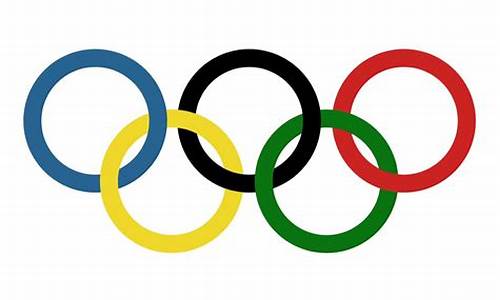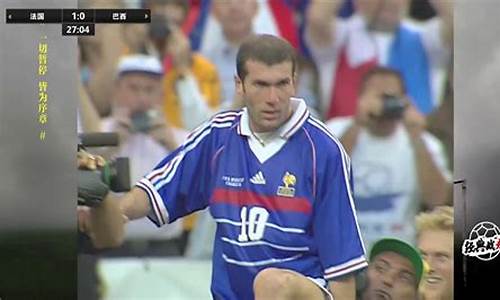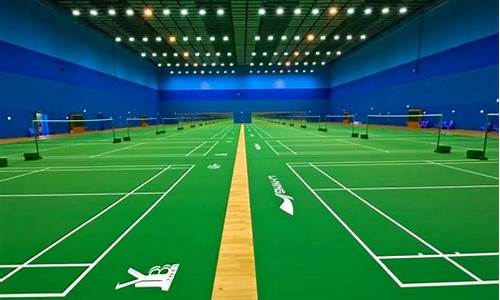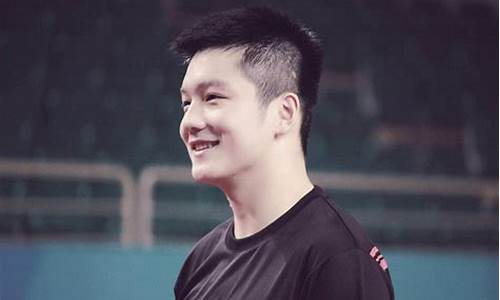您现在的位置是: 首页 > 综合体育 综合体育
奥运五环是奥运会的象征英语_奥运五环象征着什么英语翻译
tamoadmin 2024-07-17 人已围观
简介1.奥运五环尺寸2.奥运五环的意义?3.求有关奥运方面的英文常识!!!4.求一篇英语关于奥运五环的文章5.奥运五环资料英语版6.用英文介绍奥运五环象征着什么,奥运的起源,关于奥运的问题(全英文)7.奥运会五环(世界和平与团结的象征)The emblem of the Olympic Games is composed of five interlocking rings (blue, yellow
1.奥运五环尺寸
2.奥运五环的意义?
3.求有关奥运方面的英文常识!!!
4.求一篇英语关于奥运五环的文章
5.奥运五环资料英语版
6.用英文介绍奥运五环象征着什么,奥运的起源,关于奥运的问题(全英文)
7.奥运会五环(世界和平与团结的象征)

The emblem of the Olympic Games is composed of five interlocking rings (blue, yellow, black, green, and red respectively) on a white field. This was originally designed in 1913 by Baron Pierre de Coubertin, the founder of the modern Olympic Games. Upon its initial introduction, de Coubertin stated the following in the August, 1913 edition of Revue Olympique:
The emblem chosen to illustrate and represent the world Congress of 1914 ...: five intertwined rings in different colours - blue, yellow, black, green, red - are placed on the white field of the paper. These five rings represent the five parts of the world which now are won over to Olympism and willing to accept healthy competition.
In his article published in the "Olympic Revue" the official magazine of the International Olympic Committee in November 1992, the American historian Robert Barney explains that the idea of the interlaced rings came to Pierre de Coubertin when he was in charge of the USA, an association founded by the union of a two French sports associations and until 1925, responsible for representing the International Olympic Committee in France: The emblem of the union was two interlaced rings (like the vesica piscis typical interlaced marriage rings) and originally the idea of Swiss psychiatrist Carl Jung because for him the ring meant continuity and the human being.[2]
The 1914 Congress had to be suspended due to the outbreak of World War I, but the emblem (and flag) were later adopted. They would first officially debut at the VIIth Olympiad in Antwerp, Belgium in 1920.
The emblem's popularity and widespread use began during the lead-up to the 1936 Summer Olympics in Berlin. Carl Diem, president of the Organizing Committee of the 1936 Summer Olympics, wanted to hold a torchbearers' ceremony in the stadium at Delphi, site of the famous oracle, where the Pythian Games were also held. For this reason he ordered construction of a milestone with the Olympic rings carved in the sides, and that a torchbearer should carry the flame along with an escort of three others from there to Berlin. The ceremony was celebrated but the stone was never removed. Later, two British authors Lynn and Gray Poole when visiting Delphi in the late 1950s saw the stone and reported in their "History of the Ancient Games" that the Olympic rings design came from ancient Greece. This has become known as "Carl Diem's Stone".[3] This created a myth that the symbol had an ancient Greek origin. The rings would subsequently be featured prominently in Nazi images in 1936 as part of an effort to glorify the Third Reich.
The current view of the International Olympic Committee is that the emblem "reinforces the idea" that the Olympic Movement is international and welcomes all countries of the world to join.[4] As can be read in the Olympic Charter, the Olympic symbol represents the union of the five continents and the meeting of athletes from throughout the world at the Olympic Games. However, no continent is represented by any specific ring. Though colourful explanations about the symbolism of the coloured rings exist, the only connection between the rings and the continents is that the number five refers to the number of continents. In this scheme, the Americas are viewed as a single continent, and Antarctica is omitted.
五环旗的诞生
1914年6月,国际奥委会在巴黎召开第十六届全会。全会闭幕的日子——6月23日,正好是顾拜旦在巴黎索邦第一次召集奥林匹克会议建议振兴古代奥运会的20周年纪念日。在奥林匹克运动诞生20年的喜庆之际,国际奥委会顾拜旦男爵向与会的委员们献上了自己的杰作——国际奥委会会旗,它由洁白的底色和蓝、黄、黑、绿、红的五色圆环组成的五环旗.
后来又将5 个不同颜色的圆环解释奥运五环,也称为奥林匹克环,从左至右为天蓝、黄、黑、绿、红五色。这个标志是第一届现代奥运会上,由顾拜旦提议设计的,起初的设计理念是它能够概括会员国国旗的颜色,但以后对这五种颜色又有其他的解释。19年国际奥委会出版的《奥林匹克评论》(第四十期)强调,五环的含义是“象征五大洲的团结,全世界的运动员以公正、坦率的比赛和友好的精神,在奥运会上相见”。 为五大洲的象征.
奥运五环的来历
说起五环的来历,曾经有过这样一个有趣的故事。 1936年第11届柏林奥运会第一次举行火炬传递活动,火炬的传递路线自奥林匹亚开始,从希腊北部出境,沿多瑙河穿过奥地利,最后进入德国。为了烘托这一具有象征意义的活动,奥运会组委会卡尔·迪姆及其同事几乎完全按照古奥运会的情景来布置沿途经过的古希腊遗址。火炬到达德尔菲帕那萨斯山的古代运动场时要举行一个特别仪式,这时,迪姆突发奇想,在一个高约3英尺的长方形石头的四面设计并刻上了现代奥林匹克运动的五环标志,放在了古运动场的起跑线一端。仪式结束后,火炬继续北上,而这块作为道具的石头却被留在了古运动场。
由于极少有人知道这块刻有五环标志石头(后被称做“迪姆之石”)的真实身份,此后的很长一段时间,它被当做了“有3000年历史的古代奥运会遗迹”。这个以讹传讹的错误直到20世纪60年代才被德尔菲的希腊官员指出。12年5月,这个文物被送到德尔菲的另一个地方——古罗马广场入口处。
事实上,现代奥林匹克运动的五环标志出自现代奥运会创始人顾拜旦之手。顾拜旦认为奥林匹克运动应该有自己的标志,这个念头在他的脑海里盘桓已久。1913年,他终于构思设计了五环标志和以白色为底印有五环的奥林匹克旗,打算在国际奥委会成立20周年之际推出这个标志。
19 年6 月,国际奥委会正式宣布了会旗和五环的含义:根据《奥林匹克宪章》,奥林匹克旗帜和5 个圆环的含义是:象征五大洲的团结以及全世界运动员以公正、坦率的比赛和友好的精神在奥运会上相见。
奥运五环尺寸
Blue 代表Europe (蓝代表欧洲)\r\nYellow 代表Asia (黄代表亚洲)\r\nBlack 代表Africa (黑代表非洲)\r\nGreen 代表Oceania (绿代表大洋州)\r\nRed 代表America (红代表美洲)\r\nThere are five rings on the Olympic flag, which are considered to symbolize, the five continents: Europe, Asia, Africa, Oceania and America. The Olympic motto is: "Swifter, higher, stronger." The Games can promote the understanding and friendship among different peoples and different nations. \r\n奥运会的会旗上有五个环。五环被认为象征着五大洲:欧洲、亚洲、非洲、大洋洲和美洲。奥运会的口号是:“更高,更快,更强。”奥运会能够促进各民族以及各个国家之间的理解和友谊
奥运五环的意义?
按照IOC宪章里的五环矢量图案,仔细测量相关尺寸,五环的大小和间距是以下比例:以圆环内圈半径为单位1,外圈半径为1.2;相邻圆环圆平距离为2.6;两排圆环圆心垂直距离为1.1。
奥林匹克标志 (Olympic Logo /Symbole Olympique/Olympic Rings)是由皮埃尔·德·顾拜旦先生于1913年构思设计的。
是由《奥林匹克宪章》确定的,也被称为奥运五环标志,它是世界范围内最为人们广泛认知的奥林匹克运动会标志。
它由5个奥林匹克环套接组成,有蓝、黄、黑、绿、红5种颜色。环从左到右互相套接,上面是蓝、黑、红环,下面是是黄、绿环。整个造形为一个底部小的规则梯形。
扩展资料:
未经奥林匹克标志权利人许可,为商业目的擅自使用奥林匹克标志,即侵犯奥林匹克标志专有权,引起纠纷的,由当事人协商解决。
不愿协商或协商不成的,奥林匹克标志权利人或者利害关系人可以向人民法院提起诉讼,也可以请求工商行政管理部门处理。
工商行政管理部门处理时,认定侵权行为成立的,责令立即停止侵权行为,没收、销毁侵权商品和专门用于制造侵权商品或者为商业目的擅自制造奥林匹克标志的工具,有违法所得的,没收违法所得,可以并处违法所得5倍以下的罚款。
没有违法所得的,可以并处5万元以下的罚款。当事人对处理决定不服的,可以自收到处理通知之日起15日内依照《中华人民共和国行政诉讼法》向人民法院提起诉讼。
侵权人期满不起诉又不履行的,工商行政管理部门可以申请人民法院强制执行。进行处理的工商行政管理部门应当事人的请求,可以就侵犯奥林匹克标志专有权的赔偿数额进行调解;调解不成的,当事人可以依照《中华人民共和国民事诉讼法》向人民法院提起诉讼。
利用奥林匹克标志进行等活动,触犯刑律的,依照刑法关于罪或者其他罪的规定,依法追究刑事责任。
百度百科—奥林匹克标志
求有关奥运方面的英文常识!!!
奥运五环代表着五大洲(天蓝色代表欧洲,**代表亚洲,黑色代表非洲,草绿色代表澳洲,红色代表美洲)五个不同颜色的圆环连接在一起象征五大洲的团结互助、相亲相爱,象征世界五大洲不同肤色的人民能够友好相处,象征五大洲和全世界的运动员在奥运会上相聚一堂,充分体现了奥林匹克主义的内容,所有国家—所有民族的”奥林匹克大家庭“主题。
奥林匹克标志 (Olympic Logo /Symbole Olympique/Olympic Rings)是由皮埃尔·德·顾拜旦先生于1913年构思设计的,是由《奥林匹克宪章》确定的,也被称为奥运五环标志,它是世界范围内最为人们广泛认知的奥林匹克运动会标志。它由5个奥林匹克环套接组成,有蓝、黄、黑、绿、红5种颜色。环从左到右互相套接,上面是蓝、黑、红环,下面是是黄、绿环。整个造形为一个底部小的规则梯形。
奥林匹克五环标志,它由5个奥林匹克环套接组成,由蓝、黑、红、黄、绿5种颜色。环从左到右互相套接,上面是蓝、黑、红环,下面是是黄、绿环。整个造形为一个底部小的规则梯形。根据奥林匹克宪章,五环的含义不仅代表着五大洲全世界运动员在奥林匹克旗帜下的团结和友谊,同时强调着所有运动员应以公正、坦诚的运动精神在比赛场上相见。
奥运五环
求一篇英语关于奥运五环的文章
奥运会英文文章:://zhidao.baidu/question/5362903.html?si=1
2008北京奥运会:the BEIJING 2008 Olympic Games - Games of the XXIX Olympiad
我们通过一些句子来增强对奥运会的了解:
The international Olympic Committee constituted itself on 23rd June 1894.国际奥委会于1894年6月23日成立。
The Olympic symbol, the five interlocking rings, represents the union of the five continents and the meeting of the athletes of the world at the Olympic Games.奥林匹克的标志是五个相连的圆环,它代表着五大洲的团结和全世界运动员在奥运会上相聚一堂。
The official languages of the IOC are French and English.国际奥委会的官方语言是法语和英语。
The Olympic flame is a symbol reminiscent of the ancient Olympic Games.奥运圣火是人们缅怀古代奥运会的象征。
The Olympic Games consist of the Games of the Olympiad and the Olympic Winter Games. Both take place every four years.奥运会包括夏季奥运会和冬季奥运会,它们都是每四年举办一次。
The Olympic Games shall be proclaimed open by the Head of State of the host country.奥运会由东道国国家元首宣布开幕。
The delegation parade in alphabetical order according to the language of the host country, except for Greece, which leads the parade, and for the host country which brings up the rear.代表团按东道国语言文字的字母顺序入场。希腊和东道国例外,希腊代表团第一个入场,东道国代表团最后一个入场。
市民奥运英语100句
I. Good Wishes 祝愿用语
1. Good Luck!祝你顺利(祝你好运)!
2. All the best!祝你万事如意!
3. He a good trip! 旅途愉快!
4. Wish you a success!祝你成功!
5. He a good day! 祝你今天开心!
6. I hope to see you soon.我希望不久见到你。
7. Congratulations! 祝贺(你)!/恭喜!
8. Hy birthday! 生日快乐!
9. I wish you the best of health! 祝你身体健康!
10. Long live our friendship! 愿我们友谊长存!
II. Asking for and offering help请求提供帮助
11. Could you help me? 你能帮助我吗?
12. Would you please do me a for? 能帮我个忙吗?
13. Would you please give me a hand? 帮我个忙好吗?
14. What can I do for you? 您需要什么帮助?
15. Can(May)I help you? 我可以帮你吗?
16. Let me help you. 我来帮助你。
17. It's very kind of you! 你真是太好啦!
III. Asking the Way 问路
18. Excuse me, can you tell me the way to the station?
劳驾, 请问去车站怎么走?
19. Straight on. 一直往前走。
20. Go down this street. Then turn left. 沿这条街走下去, 然后朝左拐。
21. Turn right at the second crossing. 在第二个路口往右拐。
22. I'm sorry. I he no idea where it is. 对不起,我不知道它在哪儿。
23. Thank you all the same. 尽管如此, 还是要谢谢你。
24. Is it far from here? 离这儿远吗?
25. Yes. You'd better take a bus. 远,你最好坐公共汽车去。
26. It's about 1 kilometer from here. 距这里约一公里。
27. Excuse me, does the Bus No. 4 stop at the China Trade Center? 劳驾,
4路公共汽车在国贸停吗?
28. How long is the ride? 坐车要用多长时间?
29. It will take about 20/twenty minutes. 大概需要20分钟。
30. Thank you very much. 非常感谢。It's a pleasure. 乐意为您效劳。
IV. Shopping 购物用语
31. Can I help you? 您要买点什么?
32. Yes, I'd like to buy a book. 是的, 我要买本书。
33. Ok. Here you are. 行,给你。
34. How much is it? 多少钱?
35. It is seven yuan and fifty cents. 十七块五。
36. May I help you? 您要买什么?
37. Yes, I want to buy a shirt. 是的, 我想买一件衬衫。
38. What color/size/style do you want? 要什么颜色/尺寸/样子的?
39. A blue/red/green/yellow/white/black one. 蓝色的/红/绿/黄/白/黑
40. It's wonderful. I like it very much. 真不错。我非常喜欢。
41. All right. I'll take it. 好的, 我买这件衬衫。
42. Where can I pay? 在哪付款?
43. You can pay at the cashier over there. 您可以在那边的收银台付款。
44. Can I use my credit card? 我能使用吗?
45. Sure. Go ahead. 当然。请便。
46. Here's your change/receipt. 这是找您的钱/给您的收据。
47. Thanks for your good service. 谢谢你的热情服务!
48. Do come again, please. 欢迎再来。
49. Thank you. 谢谢!You're welcome. 不用谢。
V. Restaurant English 饭馆英语
50. May I he a look at the menu/wine list? 请给我看看菜谱/酒水单。
51. What's the specialty of this restaurant? 这个餐馆的的招牌菜是什么?
52. Are you ready to order? 您现在可以点菜了吗?
53. I'd like something spicy. 我想吃些辣的东西。
54. What do you recommend? 有什么菜可以推荐一下吗?
55. The steak sounds good to me. 听起来牛排不错。
56. I'm full. I can't eat any more. 我饱了,不能再吃了。
57. Bill, please. 劳驾,结帐。
58. Keep the change. 不用找零钱了。
VI. Time, Days and Months 时间、星期和月份
59. What time is it? 几点了?
60. It's 6∶00 o'clock. 六点了。
61. Excuse me, could you tell me the time? 劳驾,请问现在几点了?
62. It's half past ten. 现在十点半。
63. Excuse me, he you got the time, please? 对不起, 请问现在几点了?
64. It's a quarter to nine. 现在差一刻九点。
65. What day is it today? 今天是星期几?
66. It's Sunday/Monday/Tuesday/Wednesday/Thursday/Friday/Saturday. 今天是星期天/周一/周二/周三/周四/周五/周六。
67. What's the date today? 今天几号?
68. Today is Aug. 2nd. 今天是八月二号。
69. What month is it? 今天是几月份?
70. It's January/Feburary/March/April/May/June/July/August/September
/October/November/December. 现在是一月/二月/三月/四月/五月/六月/七月/八月/九月/十月/十一月/十二月。
71. When were you born? 你哪年初生的?
72. I was born in 1949/nine forty-nine. 我1949年初生的。
VII. Entertaining Guests 招待客人
73. Hello! 您好! How are you doing? 你好吗?
74. Hello! Welcome to our unit (home)! Sit down, please. 你好! 欢迎到我们单位(家)来!请坐。
75. Would you like a cigarette? 您吸烟吗?
76. No. Thanks. 不,我不吸烟。谢谢。
77. Would you like to drink something, coffee, tea or cola? 您想喝点儿什么,咖啡、茶,还是可乐?
78. Tea is fine with me. Thank you. 喝茶就行了。谢谢!
79. Help yourself to some fruits. 请随便吃点儿水果。
80. Give /Pass me a cup of tea/a glass of water, please! 请递给我一杯茶/。
81. Cheers! 干杯!
82. To our friendship! 为我们的友谊干杯!
83. Thanks a lot. 多谢。
VIII. Other Expressions 其它用语
84. What's the weather like today? 今天天气怎么样?
85. It's fine today. 今天天气很好。
86. Lovely day, isn't it? 天气很好,是吧?
87. Autumn is the best season here. 秋天是这里最好的季节。
88. Where are you from? 您是哪里人?
89. I'm from Hong Kong. 我是香港人。
90. Are you American? 你是美国人吗?
91. No, I'm Chinese. 不,我是中国人。
IX. Saying Goodbye 话别
92. When are you off? 你什么时候走?
93. I'm flying back on Sunday. 我星期天坐飞机回去。
94. Goodbye then and all the very best! 再见了, 祝你顺利!
95. Please say hello to your family. 请代问你的家人好。
96. I hope you'll come back to China again! 希望你能再来中国!
. I'll do that. 我一定来。
98. See you again in the near future. 后会有期!
99. Take care. 多保重。
100. Goodbye! (See you!)再见!
希望你用得着
奥运五环资料英语版
1.The Olympic Games olympic flag is the management formulates in GuBaidan under. Five links be blue, black, are respectively red, yellow,the green, three links in on, two links in under, are linked together,tight association in same place. Does obeisance the day regarding thiplanation according to the attendance, five links "in the symbolicworld acknowledged the Olympics movement, and prepares to attend theOlympic Games the five continents, but the sixth kind of color white -flag bottom color, Italy refers to all countries all without a singleexception to be able to attend the competition in under the oneselfcountry flag". Afterwards some people explained that, IOC used atfirst blue, black, is red, yellow, the green took five links thecolors were because it could represent participates in the IOC allcountries national flag at that time the color. The 7th session ofOlympic Games got up from 1920, five links five kind of colorssymbolized the five continents: The blue color represents Europe,black Italy refers to Africa, red symbolizes the Americas, the yellowsymbolizes Asia, but the green explains makes Australia. In 13 theIOC published conference proceeding "the Olympics Forum" emphasizedthat, "The conference symbol and the meeting pennant five linksmeaning is symbolizing five continents' unity, world athlete by fair,frank competition and friendly spirit, meets at the Olympic Games."
奥运会五环旗是在顾拜旦主持下制定的。五环分别为蓝、黑、红、黄、绿色,三环在上,两环在下,环环相扣,紧紧联在一起。按照顾拜旦对此的解释,五环“象征世界上承认奥林匹克运动、并准备参加奥林匹克竞赛的五大洲,而第六种颜色白色——旗帜的底色,意指所有国家都毫无例外地能在自己国家的旗帜下参加比赛”。 后来有的人解释说,国际奥委会最初用蓝、黑、红、黄、绿色作为五环的颜色是因为它能代表当时参加国际奥委有国家国旗的颜色。自1920年第7届奥运会起,五环的五种颜色象征五大洲:蓝色代表欧洲,黑色意指非洲,红色象征美洲,**标志着亚洲,而绿色喻作澳洲。 13年国际奥委会会刊《奥林匹克论坛》则强调:“会徽和会旗的五环含义是象征着五大洲的团结,全世界的运动员以公正、坦率的比赛和友好的精神,在奥运会上相见。”
2.The flag features the emblem of the Olympic Games — five interlocking rings (blue, yellow, black, green, and red respectively) on a white field. This was originally designed in 1913 by Baron Pierre de Coubertin, the founder of the modern Olympic Games, but gained widespread popularity due to its promotion by Nazi Germany [1]. Upon its initial introduction, de Coubertin stated the following in the August, 1913 edition of Revue Olympique:
The emblem chosen to illustrate and represent the world Congress of 1914 ...: five intertwined rings in different colours - blue, yellow, black, green, red - are placed on the white field of the paper. These five rings represent the five parts of the world which now are won over to Olympism and willing to accept healthy competition.
In his article published in the "Olympic Revue" the official magazine of the International Olympic Committee in November 1992, the American historian Robert Barney explains that the idea of the interlaced rings came to Pierre of Coubertin when he was in charge of the USA ( Unión des Societes Fran?aise de Sports Athletiques): The emblem of the union was two interlaced rings (like the typical interlaced marriage rings) and originally the idea of Swiss psychiatrist Carl Jung because for him the ring meant continuity and the human being. [2]
“ The Olympic flag [...] has a white background, with five interlaced rings in the centre : blue, yellow, black, green and red [...] This design is symbolic ; it represents the five continents of the world, united by Olympism, while the six colours are those that ear on all the national flags of the world at the present time. ” (1931) Textes choisis II, p.470.
The 1914 Congress had to be suspended due to the outbreak of World War I, but the flag and emblem were later adopted. They would first officially debut at the VIIth Olympiad in Antwerp, Belgium in 1920.
The emblem's popularity and widespread use began during the lead-up to the 1936 Summer Olympics in Berlin. Carl Diem, president of the Organizing Committee of the 1936 Summer Olympics, wanted to hold a torchbearers' ceremony in the stadium at Delphi, site of the famous oracle, where the Pythian Games were also held. For this reason he ordered construction of a milestone with the Olympic rings carved in the sides, and that a torchbearer should carry the flame along with an escort of three others from there to Berlin. The ceremony was celebrated but the stone was never removed. Later, two British authors Lynn and Gray Poole when visiting Delphi in the late 1950?s saw the stone and reported in their "History of the Ancient Games" that the Olympic rings design came from ancient Greece. This has become known as "Carl Diem's Stone". [3] [4]. This created a myth that the symbol had an ancient Greek origin. The rings would subsequently be featured prominently in Nazi images and theatrics in 1936 as part of an effort to glorify the Third Reich and claim a noble and ancient lineage.
The current view of the International Olympic Committee is that the flag "reinforces the idea" that the Olympic Movement is international and welcomes all countries of the world to join. [5] Some literature, such as "The World Encyclopedia of Flags" by Alfred Znamierowski, state that each ring represent the five continents. Using this scheme, the Americas are viewed as a single continent, and Antarctica is omitted.
As can be read in the Olympic Charter, the Olympic symbol represents the union of the five continents and the meeting of athletes from throughout the world at the Olympic Games. However, no continent is represented by any specific ring. Though colourful explanations about the symbolism of the coloured rings exist, the only connection between the rings and the continents is that the number five refers to the number of continents.
用英文介绍奥运五环象征着什么,奥运的起源,关于奥运的问题(全英文)
奥运会会旗和奥运会圣火的含义
The OLYMPIC FL
现代奥运会创始人顾拜旦于1913-1914年间设计了奥运会的会旗。它由5个奥林匹克环从左至右套接而成,可以是单色,也可以是蓝、黄、黑、绿、红5种颜色。最初的解释是五种颜色代表各国国旗的颜色,后来又将5个不同颜色的圆环解释为五大洲的象征。1920年,奥林匹克旗第一次飘扬在安特卫普夏季奥运会体育场。这届奥运会后,历届奥运会开幕式上由上届举办城市转交此旗,由举办城市保存,比赛期间主运动场仅悬挂代用品。
Baron de Coubertin designed the Olympic Flag in 1913-14. It has five interlocking rings (blue, yellow, black, green and red) on a white background. The ring's colours were based on the knowledge that at least one of these colours is on every flag of each participating country. The five interlocking rings represent the union of the five continents and the meeting of the athletes of the world at the Olympic Game.
The Olympic Flag was used for the first time in the 7th Olympiad in Antwerp, Belgium in 1920. It is paraded during the opening ceremony of each Game. At the end of the Games, the Olympic Flag is presented to the next host city by the Games host city.
奥运会五环(世界和平与团结的象征)
追分80……楼主应该没这么大方吧
The Olynpic Games
The Olympic Games, first held in 776BC, has a history of more than one thousand yiars. The Games is held every four years.
Many countries try their best to bid forhosting the Olympic Games. And every country does its best to get more medals in the Games. In 2000, the city of Sidney held the 27th Olympic Games. Over one hundred countries all over the world took part in it. We won 28gold medals that year. China, a major sport country, will hold the 29th Olympic Games in 2008. People from all walks of life are participating in various activities and making good preparations for it.
There are five rings on the Olympic flag, which are considered to symbolize, the five continents: Europe, Asia, Africa, Australia and America. The Olympic motto is: "Swifter, higher, stronger." The Games can promote the understanding and friendship among different peoples and different nations.
奥林匹克运动会
公元前776年首次举办的奥运会,已经有一千多年的历史了。奥运会每四年举办一次。
许多国家尽他们最大的努力争办奥运会。每个国家在运动会中都争取拿更多的奖牌。2000年,悉尼举办了第27届奥运会,全世界100多个国家参加了这次盛会。那年我国获得了28枚金牌。中国作为一个体育大国,将于2008年举办第29届奥运会。各条战线的人们正在为奥运会做着各项准备。
奥运会的会旗上有五个环。五环被认为象征着五大洲:欧洲、亚洲、非洲、澳洲和美洲。奥运会的口号是:“更高,更快,更强。”奥运会能够促进各民族以及各个国家之间的理解和友谊
奥运会英文文章:://zhidao.baidu/question/5362903.html?si=1
The international Olympic Committee constituted itself on 23rd June 1894.国际奥委会于1894年6月23日成立。
The Olympic symbol, the five interlocking rings, represents the union of the five continents and the meeting of the athletes of the world at the Olympic Games.奥林匹克的标志是五个相连的圆环,它代表着五大洲的团结和全世界运动员在奥运会上相聚一堂。
The official languages of the IOC are French and English.国际奥委会的官方语言是法语和英语。
The Olympic flame is a symbol reminiscent of the ancient Olympic Games.奥运圣火是人们缅怀古代奥运会的象征。
The Olympic Games consist of the Games of the Olympiad and the Olympic Winter Games. Both take place every four years.奥运会包括夏季奥运会和冬季奥运会,它们都是每四年举办一次。
The Olympic Games shall be proclaimed open by the Head of State of the host country.奥运会由东道国国家元首宣布开幕。
奥运会五环,是奥林匹克运动会的象征,也是世界和平与团结的象征。五环代表着五大洲,蓝色环代表欧洲,**环代表亚洲,黑色环代表非洲,绿色环代表澳洲和大洋洲,红色环代表美洲。五环的颜色和环的相互交叉,象征着五大洲的相互交流和合作,体现了奥林匹克精神的核心价值观:和平、友谊、团结。
五环的历史
奥运会五环的历史可以追溯到1913年,当时国际奥委会皮埃尔·德·顾拜旦提出了五环的构想。他认为,五环代表着五大洲,可以成为奥林匹克运动会的象征。1914年,国际奥委会正式通过了五环的设计方案。五环的设计者是法国艺术家皮埃尔·德·顾拜旦,他的设计灵感来自于奥林匹克运动会的口号:“更快、更高、更强”。
五环的含义
五环的含义十分丰富,它代表着世界各国和地区的团结、友谊和和平。五环的颜色也有着深刻的含义,蓝色代表欧洲的天空和海洋,**代表亚洲的大地和太阳,黑色代表非洲的肤色和大陆,绿色代表澳洲和大洋洲的自然环境,红色代表美洲的热情和活力。五环的相互交叉,象征着五大洲的相互交流和合作,体现了奥林匹克精神的核心价值观:和平、友谊、团结。
五环的象征意义
奥运会五环不仅是奥林匹克运动会的象征,更是世界和平与团结的象征。五环代表着五大洲,象征着世界各国和地区的团结、友谊和和平。五环的颜色也有着深刻的含义,蓝色代表欧洲的天空和海洋,**代表亚洲的大地和太阳,黑色代表非洲的肤色和大陆,绿色代表澳洲和大洋洲的自然环境,红色代表美洲的热情和活力。五环的相互交叉,象征着五大洲的相互交流和合作,体现了奥林匹克精神的核心价值观:和平、友谊、团结。
五环的应用
奥运会五环不仅是奥林匹克运动会的象征,还被广泛应用于各种场合。五环的形象已经成为了世界公认的标志,不仅出现在奥林匹克运动会的各个场馆和赛事中,还出现在各种体育品牌的标志中。此外,五环还被应用于各种文化活动和国际交流活动中,成为了世界各国和地区的象征。









